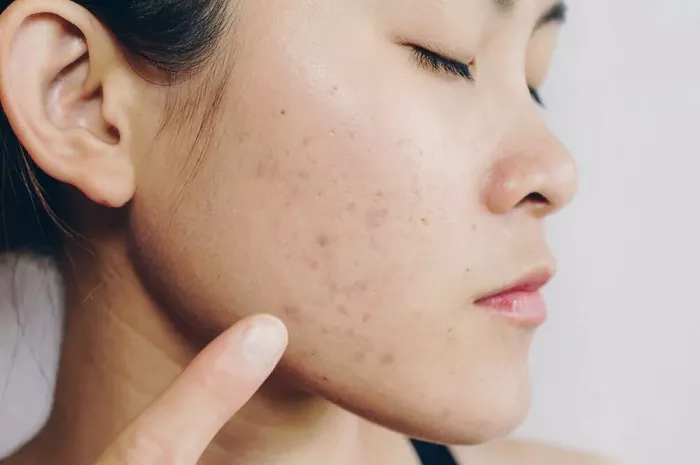In recent years, exosomes have emerged as a revolutionary element in the skincare world. Originally studied in medical and biological research, these nano-sized vesicles are now making headlines for their ability to repair, rejuvenate, and protect skin. But what exactly are exosomes, and why are they becoming central to cutting-edge skincare formulations? Exosomes are small extracellular vesicles secreted by nearly all types of cells. They are responsible for intercellular communication and carry proteins, lipids, RNA, and growth factors to targeted cells. When applied to the skin through topical products or delivered via clinical treatments, they act as messengers that stimulate skin regeneration and enhance healing responses.
The interest in exosomes for skincare largely stems from their biological efficiency. Unlike many synthetic ingredients that attempt to mimic natural skin processes, exosomes are bio-identical signals derived from stem cells or other human cells. They do not merely sit on the skin’s surface but penetrate deeply to influence cellular activity. Their introduction into skincare routines represents a new chapter in personalized and regenerative skin therapies. With anti-aging effects, inflammation reduction, and improved texture and tone, exosomes provide a multifunctional approach that far surpasses conventional serums or creams.
How Do Exosomes Work on the Skin?
Exosomes function as signaling vehicles that transfer molecular messages from one cell to another. When incorporated into skincare, exosomes communicate with skin cells, instructing them to behave in a more youthful and efficient manner. This is especially beneficial in aging or damaged skin, where natural regenerative capabilities have diminished. Exosomes deliver a potent mix of peptides, antioxidants, and growth factors that initiate repair, stimulate collagen production, and balance the skin’s immune responses.
Their mode of action is more intricate than simply moisturizing or exfoliating. They target the dermis and epidermis at a cellular level, encouraging fibroblast proliferation and angiogenesis. This means your skin not only appears healthier on the surface but is also structurally supported beneath. The healing of scars, reduction in pigmentation, and refinement of pores become possible due to the deep tissue communication facilitated by exosomes. Unlike aggressive chemical treatments, this approach is biocompatible and minimally invasive, making it suitable even for sensitive skin.
What Benefits Can You Expect from Exosome Skincare?
The list of benefits attributed to exosome skincare is both long and compelling. For starters, users report significant improvements in skin elasticity and firmness. Because exosomes encourage collagen and elastin production, sagging skin can appear lifted over time. This is particularly appealing to individuals looking for alternatives to surgical or laser-based procedures. Additionally, exosomes excel in hydrating the skin. They promote the retention of moisture by enhancing skin barrier function, resulting in a plumper and smoother complexion.
Exosomes also offer notable anti-inflammatory properties. Redness, irritation, and conditions such as rosacea and eczema may be calmed due to their immune-modulating effects. Furthermore, those struggling with acne or acne scarring can benefit from their healing and regenerative capabilities. By promoting tissue remodeling, exosomes gradually fade discoloration and refine the skin’s texture. The overall outcome is a more radiant, youthful appearance that is achieved through natural cellular processes, not just superficial treatment.
How Are Exosomes Obtained and Processed?
The collection and preparation of exosomes for skincare require precise biotechnological methods. They are often derived from mesenchymal stem cells (MSCs), which are prized for their regenerative abilities. These stem cells are cultured in controlled environments, and once they reach a certain maturity, they release exosomes into the surrounding medium. Scientists then isolate these vesicles using techniques like ultracentrifugation, filtration, or size-exclusion chromatography.
After isolation, exosomes must be purified and stabilized to ensure safety and efficacy. This step is crucial because any residual cellular debris or toxins can compromise the product’s integrity. Once purified, the exosomes are integrated into serums, creams, or ampoules that are formulated for topical application. Some high-end skincare lines even employ encapsulation technologies to preserve the exosome structure and enhance absorption. In clinical settings, exosomes may also be delivered via microneedling or laser-assisted methods to increase penetration.
Are There Any Risks or Side Effects?
Exosome skincare is generally considered safe, especially when products are formulated by reputable biotech companies and dermatological brands. Since exosomes are typically human-derived and devoid of DNA, the risk of immune rejection or toxicity is minimal. They are not live cells, which means they cannot multiply or mutate. However, as with any biologically active ingredient, sourcing and manufacturing standards are paramount. Poor-quality products may contain impurities or inactive exosomes, leading to inefficacy or adverse reactions.
Some users may experience mild redness or tingling upon initial use, particularly if the exosomes are applied after procedures like microneedling. This is usually temporary and subsides quickly. As with all skincare products, a patch test is recommended, especially for those with sensitive skin or underlying conditions. Pregnant or breastfeeding individuals should consult a healthcare provider before starting any advanced skincare treatment. While no severe side effects have been documented in reputable trials, the novelty of exosome use means long-term data is still being gathered.
How Does Exosome Skincare Compare to Traditional Anti-Aging Products?
Conventional anti-aging products often rely on ingredients such as retinol, vitamin C, or peptides to stimulate cell turnover and improve skin quality. While effective to a degree, these ingredients generally work on the surface or just beneath the epidermis. Exosomes, on the other hand, go much deeper. Their ability to communicate directly with skin cells allows for more comprehensive rejuvenation. This makes them especially suitable for addressing complex skin concerns that do not respond well to over-the-counter treatments.
Unlike traditional ingredients that may cause irritation or require long adaptation periods, exosomes tend to be well-tolerated across skin types. They don’t exfoliate or chemically alter the skin’s pH. Instead, they restore balance and functionality through biological mimicry. This natural synergy means fewer breakouts, reduced inflammation, and less risk of over-treatment. They are not a replacement for all skincare elements but serve as a potent enhancer that can elevate an existing routine to clinical levels.
Who Should Consider Using Exosome Skincare?
Exosome skincare is suitable for a broad audience, but certain groups stand to benefit the most. Individuals in their 30s and above who are beginning to see signs of aging will likely notice enhanced elasticity, reduced fine lines, and improved skin tone. Those recovering from dermatological procedures, such as laser therapy or chemical peels, can use exosome products to speed healing and reduce downtime. People suffering from chronic skin issues such as eczema, rosacea, or post-inflammatory hyperpigmentation may find relief through their anti-inflammatory and reparative actions.
It’s also an excellent option for skincare minimalists who prefer fewer, more effective products. Because exosomes deliver multiple benefits in one, they can simplify complex routines without sacrificing results. However, it’s important to have realistic expectations. While exosomes are powerful, they are not magical. They work best when integrated into a consistent, well-rounded skincare regimen that includes sun protection, hydration, and healthy lifestyle choices.
Where Can You Find Reliable Exosome Skincare Products?
The growing popularity of exosomes has led to a flood of new products on the market, but not all are created equal. When choosing exosome skincare, consumers should look for transparency in sourcing, scientific backing, and third-party testing. Brands that collaborate with biotech firms or dermatology clinics are generally more trustworthy. Packaging should also ensure stability—dark glass bottles, air-tight dispensers, and storage instructions are key indicators of a well-formulated product.
Professional treatments using exosomes are also available in medical spas and dermatology clinics. These procedures often combine exosome serums with microneedling or laser therapy to enhance absorption and efficacy. While more expensive than over-the-counter options, these sessions are supervised by professionals and offer immediate, visible results. Whether opting for at-home products or in-office treatments, the key is consistency and adherence to usage guidelines to fully reap the benefits.
What Does the Prospect Hold for Exosome Skincare?
Exosome research is evolving rapidly, and its application in skincare is just the beginning. Scientists are now exploring how customized exosome therapies can target specific skin concerns at the genetic and molecular level. Imagine a serum tailored to your unique skin transcriptome, delivering exactly what your cells need to thrive. The possibilities are immense and point toward an era of hyper-personalized, regenerative beauty.
Moreover, collaborations between biotech companies and the cosmetic industry continue to refine the extraction and formulation processes. As more clinical trials validate their safety and effectiveness, exosomes may soon become a standard component in anti-aging and therapeutic skincare. Innovations like exosome-laden patches, mRNA boosters, and smart serums are already in the experimental stages, suggesting a future where skincare is as dynamic and intelligent as the human body itself.
Conclusion
Exosome skincare represents a groundbreaking shift in how we understand and treat the skin. By leveraging the body’s natural communication system, these microscopic messengers offer a powerful, biologically harmonious approach to rejuvenation. While still relatively new to the commercial beauty world, their promise is backed by strong scientific rationale and impressive clinical outcomes. As the technology matures and becomes more accessible, exosomes may very well redefine the standards of skincare—making radiant, resilient skin not just a goal, but a biological reality.
Related Topics

































